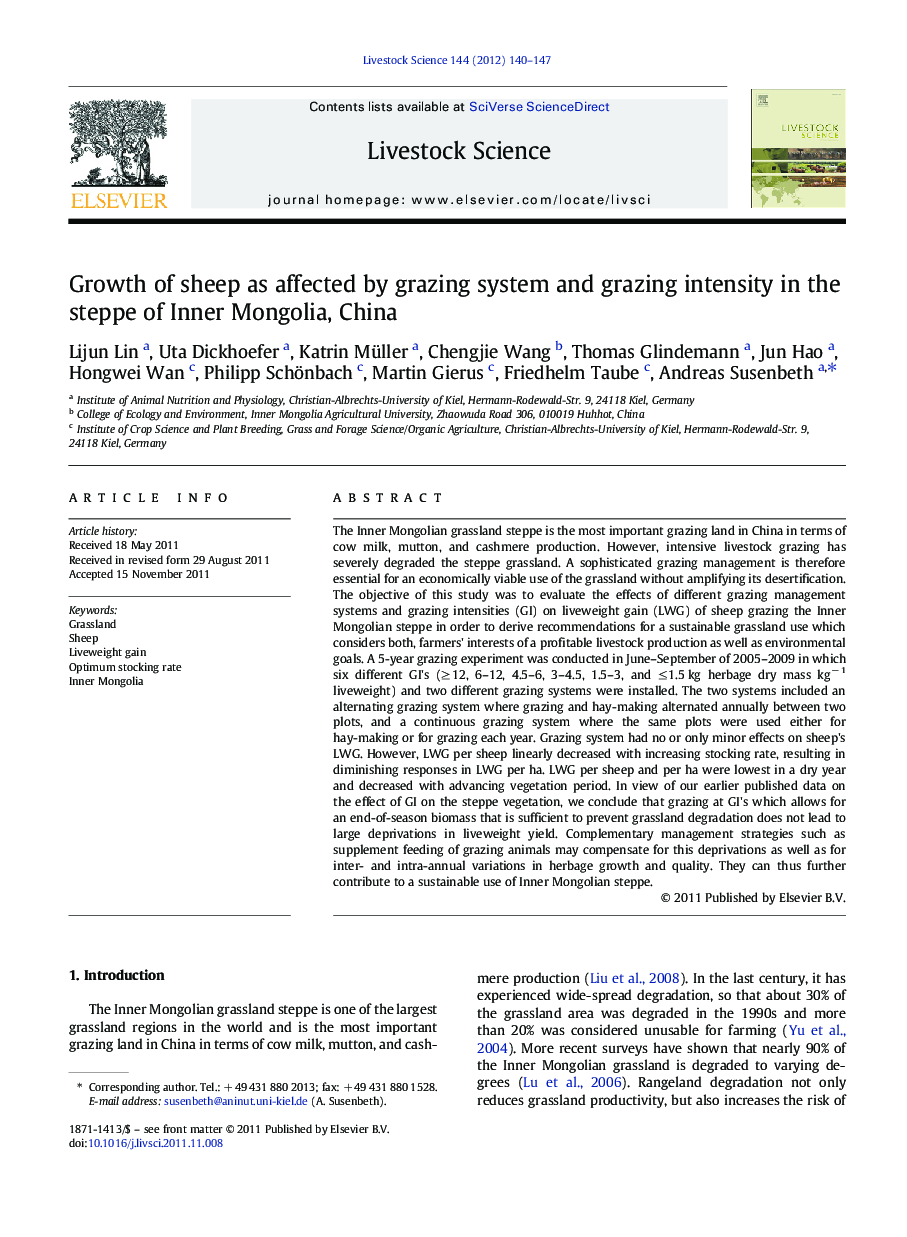| کد مقاله | کد نشریه | سال انتشار | مقاله انگلیسی | نسخه تمام متن |
|---|---|---|---|---|
| 5790938 | 1553988 | 2012 | 8 صفحه PDF | دانلود رایگان |

The Inner Mongolian grassland steppe is the most important grazing land in China in terms of cow milk, mutton, and cashmere production. However, intensive livestock grazing has severely degraded the steppe grassland. A sophisticated grazing management is therefore essential for an economically viable use of the grassland without amplifying its desertification. The objective of this study was to evaluate the effects of different grazing management systems and grazing intensities (GI) on liveweight gain (LWG) of sheep grazing the Inner Mongolian steppe in order to derive recommendations for a sustainable grassland use which considers both, farmers' interests of a profitable livestock production as well as environmental goals. A 5-year grazing experiment was conducted in June-September of 2005-2009 in which six different GI's (â¥Â 12, 6-12, 4.5-6, 3-4.5, 1.5-3, and â¤Â 1.5 kg herbage dry mass kgâ 1 liveweight) and two different grazing systems were installed. The two systems included an alternating grazing system where grazing and hay-making alternated annually between two plots, and a continuous grazing system where the same plots were used either for hay-making or for grazing each year. Grazing system had no or only minor effects on sheep's LWG. However, LWG per sheep linearly decreased with increasing stocking rate, resulting in diminishing responses in LWG per ha. LWG per sheep and per ha were lowest in a dry year and decreased with advancing vegetation period. In view of our earlier published data on the effect of GI on the steppe vegetation, we conclude that grazing at GI's which allows for an end-of-season biomass that is sufficient to prevent grassland degradation does not lead to large deprivations in liveweight yield. Complementary management strategies such as supplement feeding of grazing animals may compensate for this deprivations as well as for inter- and intra-annual variations in herbage growth and quality. They can thus further contribute to a sustainable use of Inner Mongolian steppe.
Journal: Livestock Science - Volume 144, Issues 1â2, March 2012, Pages 140-147